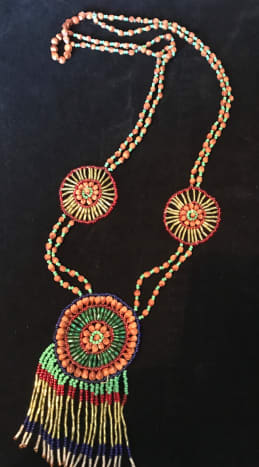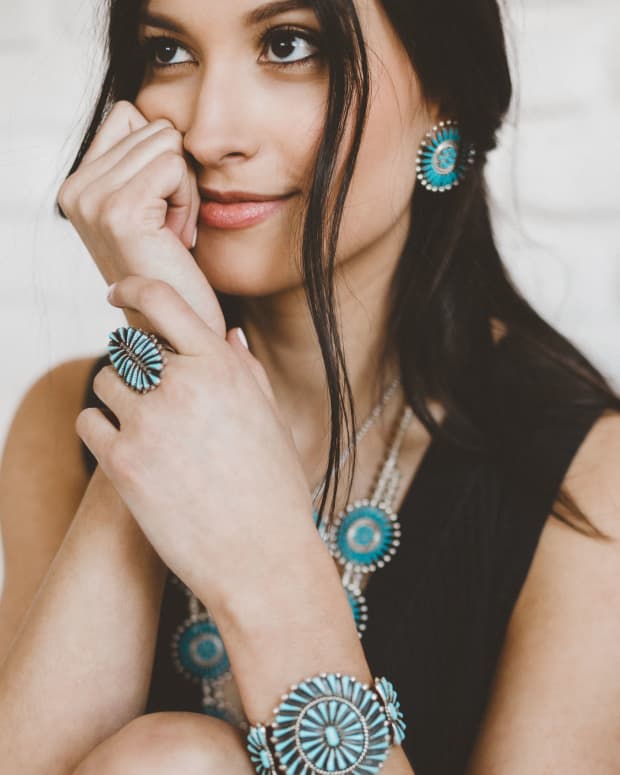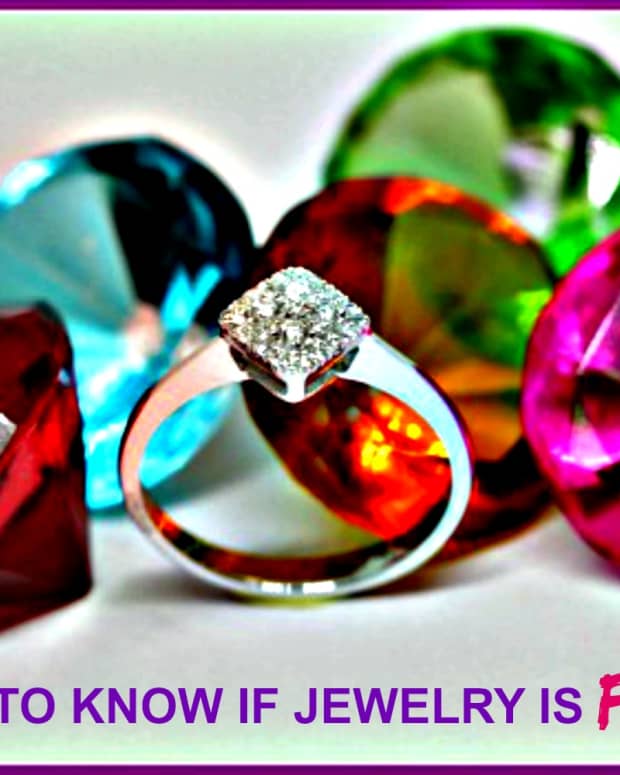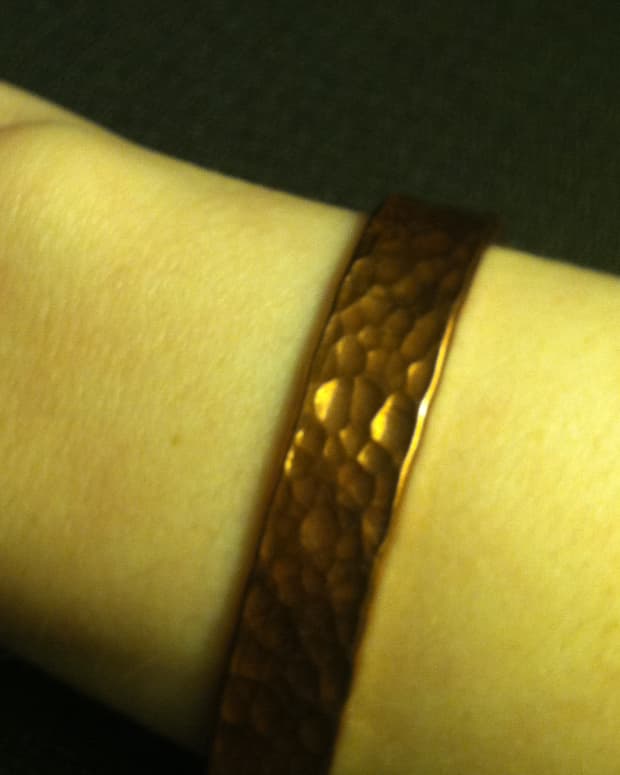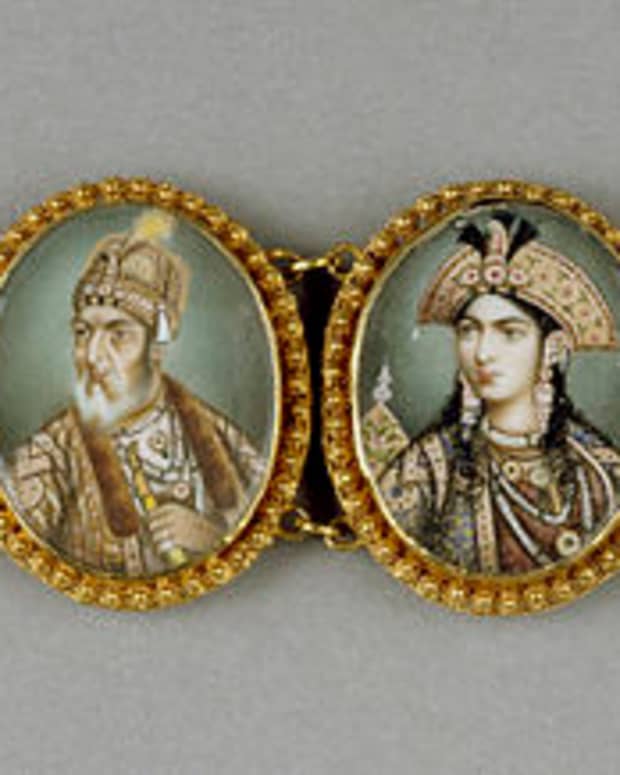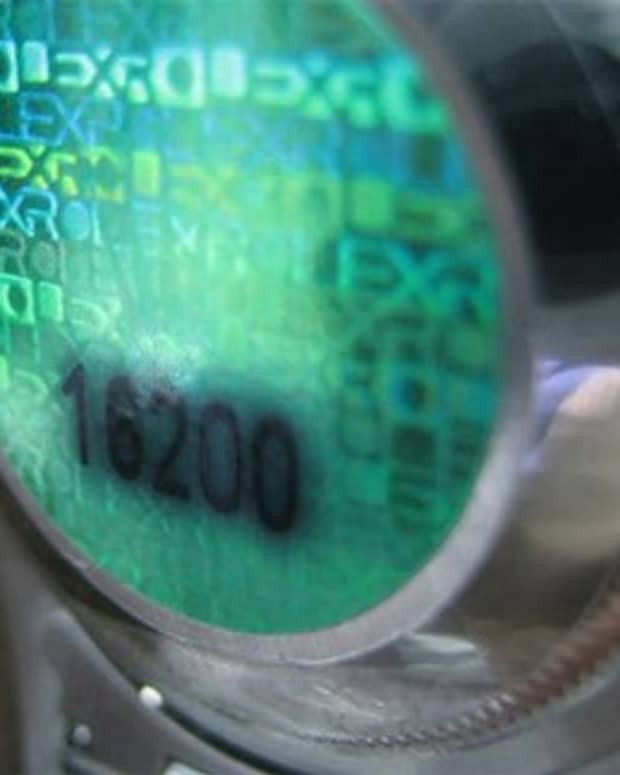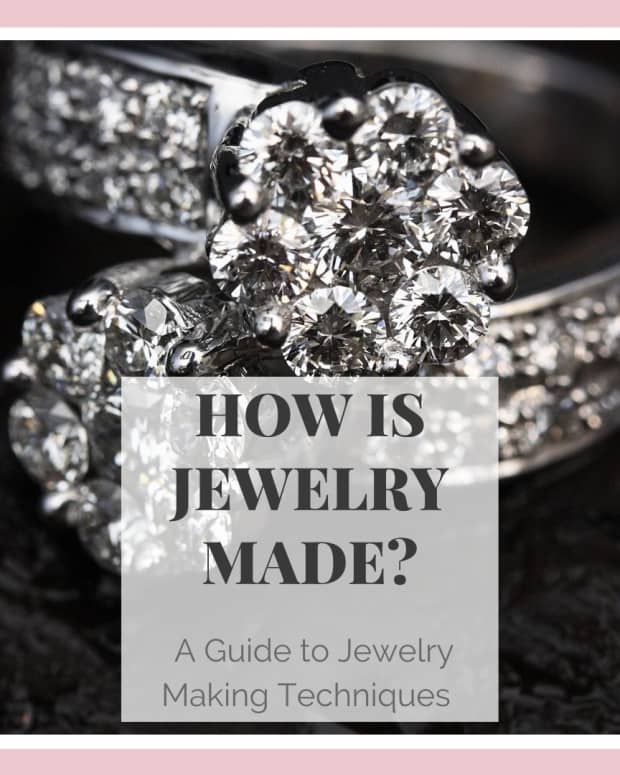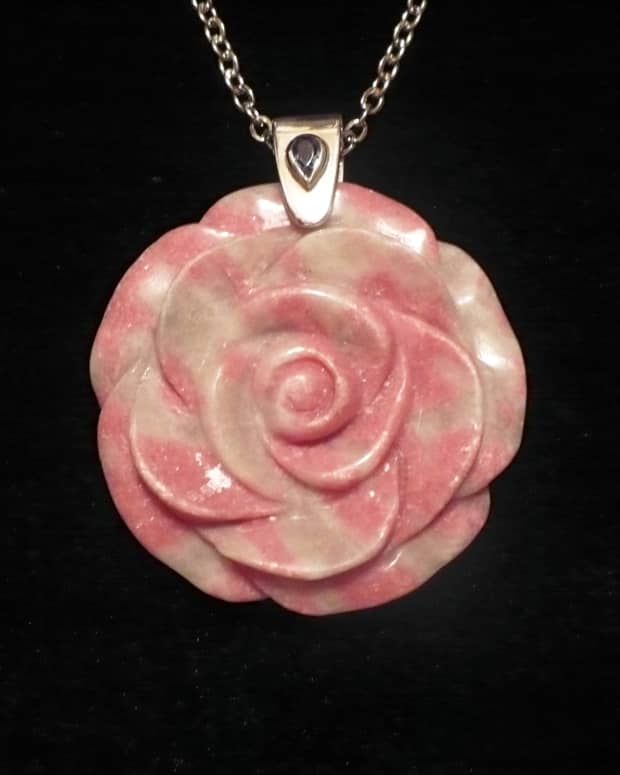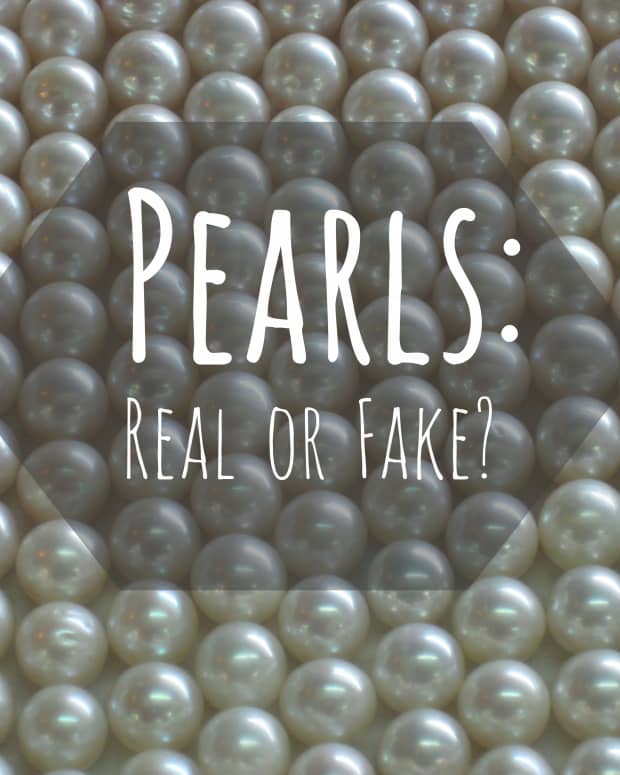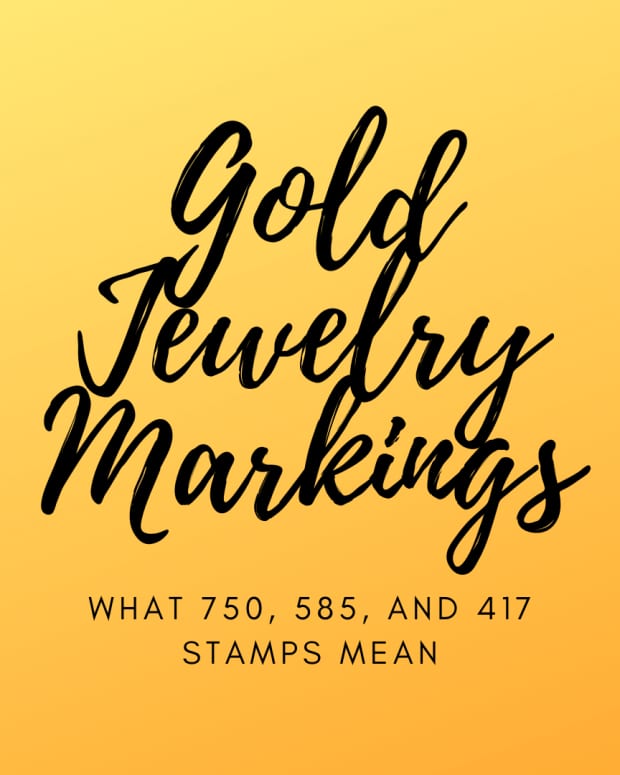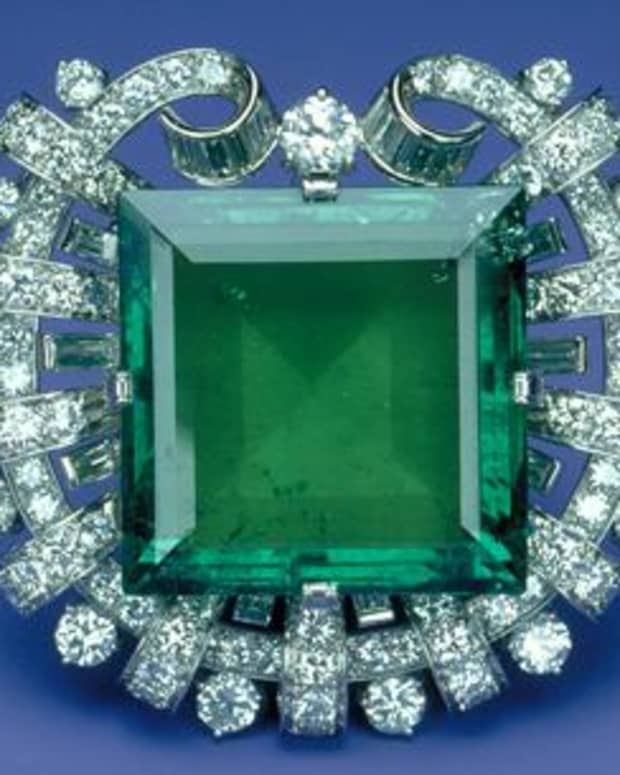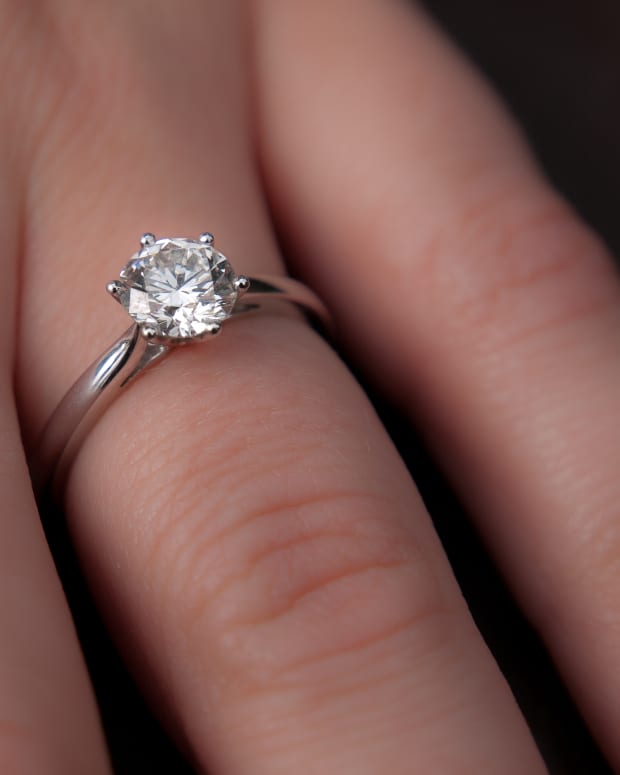How to Spot Fake Native American Jewelry
Michelle Jackson has studied art and interior design since 1983. She has attended design school and worked as an artist/visual artist.
Learn How to Spot Fake Native American Jewelry
Somewhere in our family folklore is "Big Mamma," a half Cherokee woman who ruled our family with her demeanor and size (she was over six feet tall). I grew up on stories of the Trail of Tears and tough times. Even today, if you mention any of this to my mother, she will say, "they took our land."
While ancestry.com and 23 and Me sorted out the validity of my heritage, I continue to gravitate toward all things Native American, including my Modoc husband. I've been a cultural artist for twenty years now, traveling the southwest while making Arizona our home.
This week I was glancing through "Native American" jewelry on a popular shopping site, and I realized how many people are selling fake Native American jewelry. From the number of bids these items were getting, it was obvious that people are being taken advantage of in the secondary market. It is also possible that a lack of education exists surrounding Native American jewelry. I’ve been collecting Native American jewelry and art for over 30 years. My deep appreciation for the workmanship, style, and culture that goes into a Native piece has brought me to the knowledge of the origins of this jewelry. To truly appreciate the jewelry, you have to understand the history of the people.
The last great offense against Native Americans is to copy their culture and make their art common, when it is both uncommon and spiritual.
— M. D. Jackson
History of Native American Jewelry
Original Native American jewelry was mostly made out of animal parts or natural elements. Bone, quill, antlers, and stones made up these somewhat primitive adornments. As America was colonized by Europeans, Native Americans traded for the glass beads that are seen in a lot of the earlier bead work pieces. Eventually Native Americans began working with silver coins to make what is now considered “Old Pawn” jewelry. Once laws were put into place to prevent the destruction of currency, silver came up from Mexico and or was melted down from utilitarian items. Early Native American jewelry had very little turquoise and often was unmarked. As Native jewelry became popular for tourist purchase, materials were acquired from all over the world. The beads used in tourist jewelry often came from china or Japan.
Natural Materials


Turquoise
Turquoise is a sacred stone to Native Americans. The folk lore surrounding turquoise is that it comes from tears of the Native Americans. Turquoise is also considered a healing stone, thus it was originally hung around the neck to promote healing. The materials used in a Native American piece somewhat date the jewelry as well as determine its value.
Today it is suspected that over 50% of the worlds turquoise jewelry is either other stones (Usually Howlite) dyed a turquoise color or reconstituted turquoise. Natural turquoise crumbles and therefore requires an additive to stabilize it. In older turquoise pieces, the turquoise is stabilized with a type of epoxy and put under pressure. Today lower end turquoise pieces are reconstituted meaning they are the crumbling turquoise mixed with resin or epoxy and then shaped. These pieces often look like plastic and have a warmer feel than the more natural turquoise. Howlite has a chalky look and gray lines. Turquoise has a solid natural deep tone and black lines.
Tiny pieces of turquoise were often mixed with resin to create Native Jewelry with the look of a stained glass window. This type of Native Jewelry is usually considered low end and only valuable if they were silver. Reproduction of these pieces made out of stainless steel were sold to tourists in tourist traps all over Arizona and can still be found there today.
Turquoise vs. Howlite


That which we call a rose by any other name would smell as sweet.
— William Shakespear
White Buffalo Turquoise
White Buffalo “turquoise” comes from one mine in Nevada. Technically White Buffalo is not a turquoise although it is stunning in it’s own right without the Turquoise distinction. True white buffalo has a distinct black and white contrast. What is often passed off for White Buffalo is Howlite. Raw Howlite is a white stone with gray lines.
The Indian Crafts Act of 1990
People selling non-native made items as “Native American” are breaking the law. “The Indian Arts and Crafts Act (Act) of 1990 (P.L. 101-644) is a truth-in-advertising law that prohibits misrepresentation in the marketing of Indian arts and crafts products within the United States. It is illegal to offer or display for sale, or sell any art or craft product in a manner that falsely suggests it is Indian produced, an Indian product, or the product of a particular Indian or Indian tribe or Indian arts and crafts organization, resident within the United States. For a first time violation of the Act, an individual can face civil or criminal penalties up to a $250,000 fine or a 5-year prison term, or both. If a business violates the Act, it can face civil penalties or can be prosecuted and fined up to $1,000,000.
Under the Act, an Indian is defined as a member of any federally or officially State recognized tribe of the United States, or an individual certified as an Indian artisan by an Indian tribe.
The law covers all Indian and Indian-style traditional and contemporary arts and crafts produced after 1935. The Act broadly applies to the marketing of arts and crafts by any person in the United States. Some traditional items frequently copied by non-Indians include Indian-style jewelry, pottery, baskets, carved stone fetishes, woven rugs, kachina dolls, and clothing.
All products must be marketed truthfully regarding the tribal enrollment of the producers so as not to mislead the consumer. It is illegal to market art or craftwork using the name of a tribe if a member, or certified Indian artisan, of that tribe did not actually create the art or craftwork.” (Department of Interior, 2020, sic).
In other words if you buy a necklace where the claim of Native American artistry is being made, and it turns out to be fake, you can not only get your money back, you can report it.
The Naja Squash Blossom Necklace
One of the most readily identifiable pieces of Native American Jewelry is the Naja at the center of a squash blossom necklace. The Naja is a symbol that was brought to America by the Spanish and dates back to ancient times. The Natives identified the need to sell to their market which at one time was the Spanish, hence the reason these ornate silver necklaces were created.
The squash part of the necklace is a hint to the survival of many North American Tribes. Squash was easy to farm and its name literally means “to eat uncooked”. Squash was a staple of many tribes especially during rough hunting years. Older Squash blossom necklaces have little or no turquoise and often have a cross in the center of the Naja. The turquoise that was used in older necklaces is rough, not smooth.
The Squash blossom necklaces are still in production today. Newer Native artists have created some beautiful pieces of jewelry that are still valuable. The difference is in the price. Newer Squash Blossom necklaces are in the hundreds of dollar range depending on the materials. Old pawn pieces are worth $1000-15,000 depending on the provenance. There are some amazing Native American artists still out there today.
Old Pawn
Old Pawn is a nickname given to Native American jewelry that was created around the late 1800’s and early 1900’s. It gets its name from the tendency for Native Americans to pawn pieces of jewelry to Harvey House traders for survival materials such as tools. This should not be confused with Harvey house jewelry. This method of monetary exchange was how some of the more elaborate silver pieces of Native Jewelry transitioned into other places in American culture. At that time these pieces were only worth their silver value and were not appreciated. Just like today many of the old pawn pieces were scrapped to make other popular jewelry of the time thus making the actual old pawn jewelry more valuable.
Read More From Bellatory
Identifying Similar Styles





The Distinction Between Silver Jewelry Styles
Three other types of jewelry resemble old pawn. The first is Fred Harvey jewelry which was created to sell to tourists. Fred Harvey jewelry has a more polished look as it was created through more modern methods. The easiest way to spot these pieces is the stone setting which has a straight edge rather than a zigzag edge. Also the Harvey pieces tend to have native symbols stamped into them, where as old pawn had a primitive style and features nature. The Harvey pieces are also made with thinner silver and so not have the primitive welding you see on Native jewelry.
The second type of jewelry that closely resembles old pawn is jewelry made Mexico. Mexico has been the world’s leading producer of jewelry almost since its discovery. Mexican jewelry artists did not start marking their silver “sterling” or 925 until the 1940’s. This can make it difficult to tell an old pawn piece from a Mexican silver. The styles of tribes tend to cross over and mingle. One distinction is that silver jewelry from Mexico was created differently even if they used some similar designs. Such as Mexican bracelets sometimes have a pin system that joined the pieces giving them more movement than you would see on a Native American piece. The designs on the face of a bracelet made in Mexico are more ornate and contain several types of materials (see Photo). Crosses are more prevalent in the old Mexican jewelry although you will occasionally see them in Native pieces.
The third type of jewelry that resembles Native American is jewelry from the area around India and Tibet. Rings are the most commonly mistaken Indian jewelry item. Silver Tibetan and Indian rings have a strong resemblance to Native American rings. The Indian rings are more often a skinny oval, rather than the rounder oval common in Native jewelry. Indian jewelry also tends to have stones other than turquoise. Indian beaded jewelry is often mistaken for Native American. The easiest way to distinguish between the two is the clasp. Indian pieces use a variety of clasps. Native American jewelry only has two types of silver clasp or sinew. The two types of silver clasps are both open hooks (see picture). Sinew looks sort of like a tan translucent string (see picture). You will never see a claw hook on original Native American jewelry.
Warning Signs of Imitation Native American Jewelry
- Newer design but not signed
- Blurry pictures that don’t show the stone quality
- No picture of the clasp
- Back of the piece is rough metal with pitting
- Has brass or other elements inconsistent with Native Jewelry
- The price is too good to be true
- The stone is clean without blemishes
- The piece is created using modern string
- The stones are cut in an unusual shape (natives only used rounded stones, square stones are a modern cut)
- You see multiples of the exact same item for sale
Identifying Rings


Identifying the Maker
The photo above shows three rings. The top ring is a silver ring from a non Native American Artist. That first ring is silver with a semi precious gem. I included this ring to tell you that Native American rings never have an opening behind the stone. If you pick up a ring and it has the opening, it is obviously not Native American. This is a really nice well made ring.
The second ring is a newer Native American ring. You can see the hallmark, it has the solid silver back. It is a solid ring, well made in the old pawn style.
The third ring is brass with a silver plate. It is a tourist ring mass produced using both turquoise and coral chips.
Beaded Earrings
Heishi Necklace
Heishi and Santa Domingo Necklaces
As an Arizona resident I see a lot of Native jewelry in touristy traps. The newest con going is the Heishi or Santa Domingo style jewelry. I would use extreme caution buying one of these pieces. One of the biggest tells of fakes is the clasp. Native Americans do not use claw clasps on their jewelry. Another tell is when one shop has more than one of the exact same style item. Native Americans do not mass produce pieces in that manner. You will not see 25 Heishi necklaces on a rack unless they are imported. The necklace pictured was an assemblage I did myself from online bought materials.
One last thought about this style, Many of the necklaces that are claiming to be Santa Domingo are really imports from India. There are similarities between multi strand Native American and India made necklaces. One thing you will never see on Native Necklaces is brass findings. Brass is a tell that the piece is from another country. True Santa Domingo pieces are never made with jute. Occasionally an older beaded necklace may have a sinew string, it is not jute. Also, almost ALL multi-strand necklaces transition into one strand before the clasp.
Fetish Necklaces


Fetish Animal Necklaces
One of the more popular Native American necklaces is the Zuni Animal Fetish necklace.The Zuni believe spirits reside inside the rock. The animal is carved with a distinct purpose and meaning. Consider for a moment how difficult it is to carve stone. Now think about the Zuni people carving fetish animals, it is not a simple undertaking. Zuni necklaces have small animals that are sometimes tough to distinguish with the exception of the tail style. Animals such as the fox, wolf, and badger look very similar.
This brings us to how to spot the fake Zuni animals. It really is simple, the fakes have a lot of detail that is not present in the actual Zuni animals. Intricate details on a fetish scream fake. The materials used are also a giveaway. It is rare to see a fetish animal made out of turquoise because of the crumbly nature of turquoise. Almost all of the turquoise looking fetish animals are Howlite.
Another thing you will not see in original Native American necklaces is stacked fetish animals. I have an impressive bone carved fetish necklace(see picture). The fact that it was not done by a Native American does not diminish its spectacular look. If I were ever to resell it, I would list it simply as bone carved animal necklace, not Native American.
Primitive Necklaces



Know Your Materials


Knowing Native Materials vs. Craft Store Materials
It pays to know your materials. Craft stores sell everything from silver caps to turquoise. One thing that is specific to craft store pieces is round beads. The only round beads you will see on Native jewelry are made of silver. Round turquoise does not exist in Native jewelry. Here again, most round beads are going to be Howlite. Coral beads used will not be round or square either. Beads that are too uniform are a sign that a piece is not Native American. The silver in the necklace pictured is real silver. In fact, the round silver beads are Navajo pearls, however, the rest of the necklace was put together of modern craft store beads.
Native American Style and Modern Pieces




Modern Native American Jewelry
Obviously Native American jewelry is still being produced today. Modern pieces tend to be marked by the artist and differ slightly from vintage pieces. One of the main distinctions is how the stone is set. as you see in the modern piece above, the stone is set with a straight piece of silver rather than the zigzag setting seen in old pawn jewelry. Although the newer pieces may not contain as much silver, they should still be valued culturally and artistically. I hope this article has helped you to understand the important distinction between imitation and real Native American Jewelry.
Questions & Answers
Question: Are animal fetish necklaces made in silver, or are they only made in stone? I have a silver fetish necklace but is not marked and has hook closure like the one you described. Any info greatly appreciated.
Answer: I have never seen a silver fetish necklace. Fetish necklaces were mostly the Zuni tribe. The Zuni are close to the Mexico border so what happened a lot is that jewelers from Mexico would create pieces that stylistically reflected Native pieces. If your piece is solid silver then it has a silver value regardless of origin. a clue is usually the beads used in between the fetish animals. I would have to see the piece to give you an idea of who made it. If the animals are three dimensional that would be an odd native piece simply because the Natives believe the stone tells them what animal it should be. To have a silver cast animal takes the element of spirit out of the piece.
Comments
Robin on July 25, 2020:
Thank you for a very informative article. I learned a lot.
Liz Westwood from UK on January 29, 2020:
This is a detailed and very useful article. I have learnt a lot from it.
Pamela Oglesby from Sunny Florida on January 28, 2020:
This was such an interesting article as I didn't know there was so much fake jewelry out there. I am going to check my jewelry as my mother gave me some turquoise jewelry that I think I still own.
You know so much about the American Indian jewelry. I would imagine that took a lot of work on your part. This is an excellent article for future reference.

